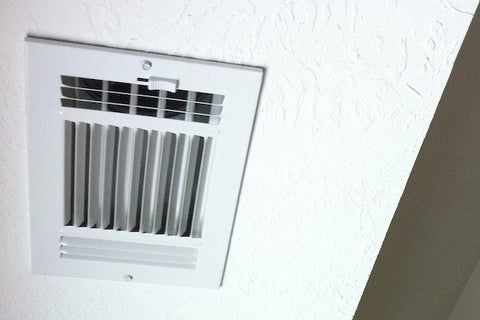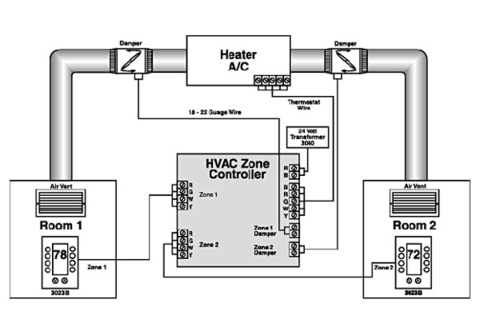It’s been almost four years since the launch of the Keen Home Smart Vent System (which has since been re-branded as Keen Zoning) and the Ecovent Whole Home System. A ton has happened in that time. Most recently, we announced that Ecovent joined forces with us to create the most trusted, comprehensive brand in the smart zoning industry. As industry pioneers, we're proud to have brought smart residential climate control to thousands of homes and to have inspired an entire industry committed to improving homeowner comfort, efficiency, and air quality.
As we grew our businesses, many HVAC installers and contractors showed interest in our products as a way to bring cutting edge technology and increased comfort and efficiency to their clients. At Keen Home, a key part of our growth strategy was partnering with these HVAC professionals to help spread the word about Keen Zoning. This worked well, but it also gave us a first-hand glimpse at how some HVAC professionals view Smart Vents and the misconceptions they still have about them. Our friends at Ecovent encountered similar resistance, so now that we’re all under one roof we thought it would be helpful to address these topics head-on for the entire Smart Vent industry. Let’s dive right in:
Smart Vents Make HVAC Systems More Responsive
A simple HVAC system isn’t built to be responsive to the needs of a home’s occupants. Even the best designed, seemingly well balanced system is designed to shuttle air from a return vent to open supply vents, regardless of how uncomfortable the rooms already are. To solve this, adjustable louvers were invented, letting us direct air flow by dampening or closing select vents. But manual louvers are a pain to access/use.

Enter Smart Vents, which gave users instantaneous control of their vents from their phone. When they want to make a room warmer or cooler, with Smart Vents they can at the press of a button. Factor in automation features like scheduling and target temperature levels and what was once a labor-intensive process suddenly became hands-free and driven by the state of the room and its occupants.
Smart Vents Make Smart Thermostats Smarter
We get asked a lot whether Smart Vents are needed if a home already has a smart thermostat. The truth is, smart thermostats can only do so much on their own. A thermostat’s ability to adequately manage the climate in individual rooms is made significantly better when it has the ability to sense conditions in the room and drive air to or from it.

Even when paired with remote sensors, smart thermostats can only respond to calls for more warm or cool air on a per zone basis, which in most homes means the entire house. With Smart Vents communicating with the sensors and smart thermostat, the warm or cold air called for by the thermostat can be targeted to the room where the sensor is taking its reading. That’s not only more efficient, but makes a home significantly more comfortable.
Smart Vents Are 100% Safe (and More Affordable)
Since we launched back in 2015, HVAC “experts” have been asserting the red herring that closing vents can damage an HVAC system. In our experience, this comes more from a place of self preservation amidst rapid technological change than genuine concern.
In every HVAC system, air travels from a place of high pressure to one of low pressure, meaning air typically flows to the nearest supply vent from which it can leave the duct system. Unless you have all of your vents closed while you run your HVAC (you shouldn’t), there isn’t a scenario in which enough pressure is created in your system to cause anything more than higher airflow from open supply vents. Further, the reality is, dangerously high pressure airflow will most often just leak out of the seals in a home's duct-work rather than actually damage the HVAC unit.

This wasn’t a new discovery with the advent of Smart Vents. It’s why in some homes, vents are entirely blocked off--and it’s at the core of traditional HVAC zoning. We wrote a piece on how HVAC zoning works a few years back, and the gist is that it’s possible because dampers regulate how much air reaches a set of rooms/vents. Smart Vents do the same, but at the vent level. Where traditional zoning systems cost upwards of $10,000 and requires dampers be installed inside the ductwork, Smart Vents are non-invasive and provide both greater control and more intelligent functionality at ⅛ the price. Further the pressure sensing capabilities of our systems ensure the homeowner has real-time insight into the health of their HVAC system, as opposed to just wondering if damage is being done.
We're proud of our track record of 100% HVAC system safety over our 4+ years on the market.
Of the thousands of HVAC professionals who trust Smart Vents enough to recommend them to their clients, there are still some holdovers out there that, through misunderstanding, still see Smart Vents as a risk. If you find that your HVAC contractor is one of these skeptics, show them this post and suggest they reach out to us. We’ll make them a believer.